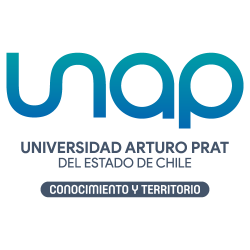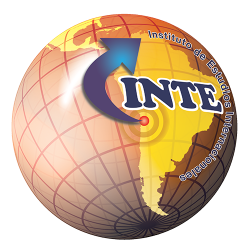Submissions
Submission Preparation Checklist
As part of the submission process, authors are required to check off their submission's compliance with all of the following items, and submissions may be returned to authors that do not adhere to these guidelines.-
Files must be submitted in Word.
Have you prepared the following files?
- Full article with author information (degrees, granting institutions, institutional affiliation, email and ORCID.)
- The article must be anonymous. This includes both the manuscript and Word file properties. No references that may reveal the author’s identity may be included in the body of the text. (The author may cite themself impersonally, without alluding to the fact that they are the author of the manuscript.)
* Remember that this version will be sent to the reviewers. - Signed author agreement. Download letter template.
- Letter of informed consent, if applicable, for interviews and/or testimonies. Review the definition of COPE.
-
Structure:
- Does your manuscript meet the basic requirements regarding structure (see below)? Introduction, Discussion, Conclusion.
-
Format:
- Letter sized paper
- 2.54 cm (one inch) margin at the top, bottom, left and right of each page.
- Times New Roman (TNR) 12-point font for the manuscript text and TNR 10-point font for the footnotes.
- Multiple 1.14 spacing between lines in the manuscript text, including all direct citations and references. Single spacing for footnotes.
- Justified paragraph alignment throughout the manuscript, including footnotes and citations and references.
For any circumstance that is not addressed, followAPA 7 (English), APA 4 (Spanish).
-
Does the first page and abstract in the first article with the author information include the following information?
- Article title in English and in Spanish (maximum 12 words).
- Author information (first and last names), main institutional affiliation (mention only one).
- Footnote with academic degrees, granting institutions, institutional affiliation, address, email address, and ORCID.
- If applicable, list special circumstances related to the article in the author footnote, such as whether it was presented at a conference or similar, if student documents were used for the basis of the article, or any relationship that may be perceived to be a conflict of interest.
- Abstract (150-200 words).
- Three to five keywords in Spanish and English, respectively.
-
Titles and Subtitles
- Article title in Spanish: Centered, bold, 14-point TNR font, black.
- Article title in English: Centered, bold, 13-point TNR font, 50% black font.
- Manuscript titles:
Level 1, left adjusted, bold, 13-point TNR font.
Level 2, left adjusted, bold, italics, 12-point TNR font.
Level 3, left adjusted, italics , 12-point Normal TNR font. *For any circumstance that is not addressed, follow APA 7 (English) and APA 4 (Spanish) rules..
*Do not number the titles.
-
References and citations:
- Are all of the citations in the correct format according to APA rules? Is the information (author name, publication year, and page numbers) all correct?
- Are the bibliographic references organized alphabetically by the authors’ last names?
- Are the page numbers of all articles or book chapters mentioned provided in the list of references?
- Do the citations and references align? Each citation has a reference and each reference has a citation.
*For any circumstance that is not addressed, follow APA 7 (English), APA 4 (Spanish).
-
Tables and Figures (illustrations, photographs, maps, graphics):
- Are all of the tables and figures numbered? Are their titles provided?
- Did you cite your source?
- Have all vertical lines been removed from the tables?
- Are all of the tables and figures included in the article text mentioned or referenced?
- Are the table and figure elements sufficiently legible and clear?
- Ensure that long tables are no more than one page long.
- Are the tables and figures numbered consecutively using Arabic numerals (not Roman numerals)?
-
Length
- Is your article no more than 10,000 words long?
*Including the abstract, keywords, footnotes and references.
- Is your article no more than 10,000 words long?
-
Abbreviations:
- Have you explained all of the abbreviations included in the article?
- I've read and signed the copyright and licensing agreement.
- I've read and signed the originality declaration statement.
Editorial
Editorial
Copyright Notice
Authors who publish in Si Somos Americanos agree to the following terms:
- Authors retain copyright and grant the journal right of first publication with the work simultaneously licensed under a Creative Commons Attribution License 4.0 (CC BY 4.0) that allows others to share the work with an acknowledgement of the work's authorship and initial publication in this journal.
- Authors are able to enter into separate, additional contractual arrangements for the non-exclusive distribution of the journal's published version of the work (e.g., post it to an institutional repository, website or publish it in a book), with an acknowledgement of its initial publication in Si Somos Americanos.
- Authors are permitted and encouraged to post their work online (e.g., in institutional repositories or on their website) after the work has been published in Si Somos Americanos.
Privacy Statement
The data collected from registered and non-registered users of this journal falls within the scope of the standard functioning of peer-reviewed journals. It includes information that makes communication possible for the editorial process; it is used to informs readers about the authorship and editing of content; it enables collecting aggregated data on readership behaviors, as well as tracking geopolitical and social elements of scholarly communication.
This journal’s editorial team uses this data to guide its work in publishing and improving this journal. Data that will assist in developing this publishing platform may be shared with its developer Public Knowledge Project in an anonymized and aggregated form, with appropriate exceptions such as article metrics. The data will not be sold by this journal or PKP nor will it be used for purposes other than those stated here. The authors published in this journal are responsible for the human subject data that figures in the research reported here.
Those involved in editing this journal seek to be compliant with industry standards for data privacy, including the European Union’s General Data Protection Regulation (GDPR) provision for “data subject rights” that include (a) breach notification; (b) right of access; (c) the right to be forgotten; (d) data portability; and (e) privacy by design. The GDPR also allows for the recognition of “the public interest in the availability of the data,” which has a particular saliency for those involved in maintaining, with the greatest integrity possible, the public record of scholarly publishing.



